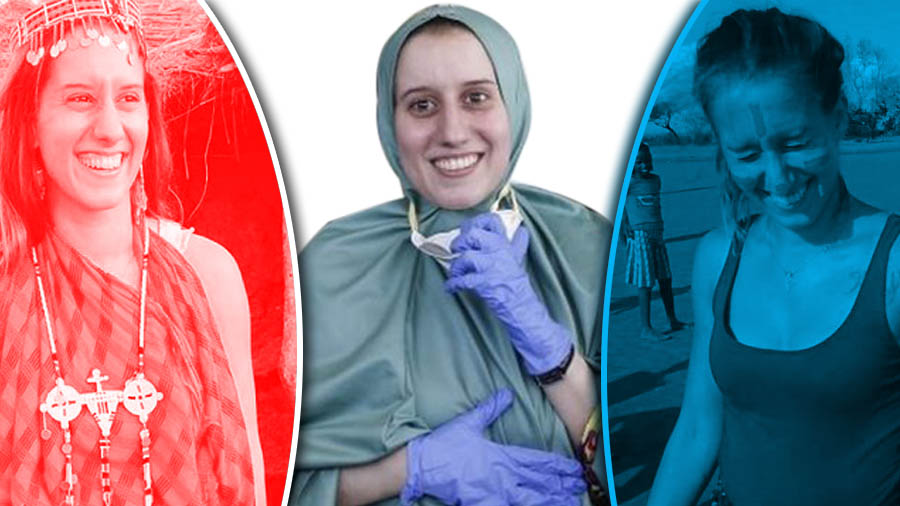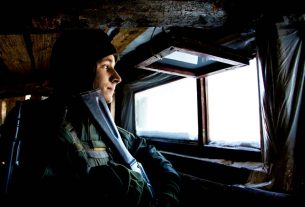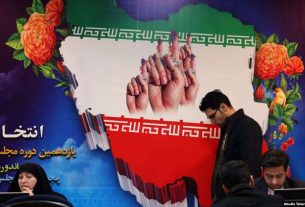Fri 05 June 2020:
Silvia Romano kidnapped in Kenya faced a hostile welcome when she returned to Italy.
In November 2018, Italian aid worker Silvia Romano was kidnapped by gunmen linked to the Somali armed group al-Shabab in northeast Kenya. At the time of the attack, which left several people wounded, Romano was volunteering for an Italian NGO in an orphanage in the village of Chakama.
The news of Romano’s kidnapping caused not only sadness and worry, but also controversy in her home country. Right-wing politicians and public figures, and some members of the public, accused the aid worker of “looking for trouble” by going to Kenya, and claimed she should have “stayed in Milan and helped people there”.
They called her decision to go to Kenya as a volunteer aid worker an expression of “bravado” and claimed she was seeking attention. These accusations were countered by outraged liberals who talked of the “importance” of idealistic youngsters like Romano going abroad on voluntary aid missions, and helping those in need in other countries.
In the following weeks, the news cycle moved on and the discussions about Romano, and the work she had been doing in Kenya, slowly came to an end.
Las month, however, Romano once again found herself at the receiving end of right-wing attacks, this time not only for going to Kenya and “causing trouble”, but also for voluntarily choosing to convert to Islam during her ordeal.
The outpouring of Islamophobia and hate
On May 9, when Italian Prime Minister Giuseppe Conte announced on Twitter that Romano had finally been freed, most Italians were overjoyed. Soon after, however, it was revealed that the aid worker had chosen to become a Muslim during her 18 months in al-Shabab captivity and that she had changed her name to “Aisha”. This dampened the celebratory mood and led many on the Italian right to once again question Romano’s motivations for going to Kenya in the first place.
After Romano landed in Rome wearing a light green jilbab – a loose-fitting robe that covers the entire body and is often worn by Somali women – her conversion swiftly became the sole focus of right-wing Italian media outlets. They published “before and after” photos showing the aid worker’s “transformation” and embarked on a quest to shed light on “the mystery surrounding the conversion”: Was she forcibly converted? Was she brainwashed? Was she a victim of Stockholm syndrome?
“We have freed a Muslim woman,” declared conservative daily Libero Quotidiano, as if only Christian Italian citizens, and not Muslim ones, deserve to be protected by the government of the country they call home.
“Islamic and happy. Silvia the ungrateful,” read the front-page headline of an article by Alessandro Sallusti, the editor of Il Giornale. In the same article, Sallusti accused Romano of wearing the “jihadist uniform of the enemy” and claimed her conversion is as absurd as a Jew coming back from a concentration camp dressed as a Nazi.
Several right-wing politicians also used Romano’s ordeal and conversion as an opportunity to promote Islamophobic views. The leader of the right-wing League party, Matteo Salvini, for example, framed Romano’s kidnapping and conversion within an alleged clash of civilisations, and claimed that “Islamic terrorists” have won “the cultural battle in the name of the Islamic veil and conversion”. Salvini’s deputy, Alessandro Pagano, meanwhile, branded Romano “the new terrorist” during a parliamentary session.
The right-wing media’s aggressive and accusatory coverage of Romano’s release and conversion to Islam, coupled with prominent League politicians’ hateful and discriminatory comments, exposed how entrenched Islamophobia has become in Italy.
But, Romano was not only targeted by these usual suspects.
Some Italian feminists also attacked the young aid worker for converting to Islam and wearing “Islamic clothes”.
Prominent feminist historian, Nadia Riva, who in the 1980s was one of the founders of the influential and radical feminist group the Cicip & Ciciap club, for example, in a Facebook post referred to Romano as “a smiling woman in a green recycling bag”. Claiming Romano’s jilbab is a symbol of male oppression rather than an expression of her religious identity, she explained that she could not believe a woman would choose to dress that way willingly.
Many Italian feminists came to Romano’s defence and distanced themselves from Riva’s controversial comments. However, the fact that some prominent Italian feminists found it appropriate to attack a fellow woman because of what she chooses to believe in and the way she chooses to dress demonstrated how embedded is the idea of moral superiority in parts of the Italian and Western feminist movement.
Reproducing ‘white saviour myths’
Italian liberals and the left wing openly condemned the hate Romano received for converting to Islam and celebrated her return home. Their response to the hateful right-wing rhetoric surrounding the aid worker’s liberation, however, was equally problematic, albeit for different reasons.
In their response to the whole Romano saga, Italy’s liberal media organisations and public figures tried to highlight the human side of the story, and celebrated her safe return home without any reservations. But in their undoubtedly well-intentioned celebration, they promoted deep-rooted and highly damaging stereotypes about Africa. They not only portrayed the continent as a savage and abandoned place, but they also implied Africans are in need of “white saviours”.
Liberal newspapers published countless images showing Romano surrounded by Kenyan children, but did not attempt to preserve the privacy of these children as they would normally do with European ones. These images, and articles that accompanied them, were perfect reproduction of decades of “white saviour” myths, which talked of selfless Western men and women who travelled to Africa to “save” African children with no agency.
Italy’s leading centre-left daily La Repubblica even published an article claiming Romano “was betrayed by the same village she wanted to save” – a claim that reaffirms baseless and damaging tropes about the ungratefulness of African people in the face of Western attempts to “save” them.
One of the most obvious reproductions of the “white saviour myth” came from best-selling author and vocal anti-fascist Roberto Saviano. In an article published in La Repubblica, and on his Facebook page, Saviano portrayed Africans – perhaps unintentionally – as people living in a desolated place who are in need of help and guidance from the West.
In his article welcoming Romano back to Italy, Saviano described the Kenyan children she worked with as “forgotten and abandoned” and claimed they will likely become al-Shabab fighters themselves in the absence of Western “saviours” like Romano. Ignoring Kenya’s own fight against the armed group, he even went as far to say “a young European woman who arrives unarmed to stay next to the children” like Romano is the “great enemy” of such terrorist organisations.
This narrative is not only problematic and simplistic, but also misleading and paternalistic. It presents a decontextualised image of the region and ignores the role Europeans themselves played, and continue to play, in the ongoing calamity in the Horn of Africa.
Indeed, according to a study released in 2018, many of the orphaned children in Kenyan towns like Chakama will not go to Somalia to fight for al-Shabab, but will most probably move to nearby international tourist spots like Malindi, Mtwapa or Mombasa to try and make a living. There, the biggest threat facing them would not be the possibility of radicalisation, but being pushed into the sex trade. In these regions, it needs to be noted, the main clientele of sex workers are mainly European sex tourists, including Italians.
The Italian media’s coverage also ignored Italy’s past crimes in Africa. As newspapers and TV channels discussed the role Turkey played in the liberation of Romano, and claimed the country is now “the new master of the Horn of Africa”, their nostalgia for those times when Italy had power over these parts of Africa was apparent. In these think pieces, of course, there was no mention of the disaster Italy’s colonial enterprise caused in the Horn of Africa in the last century.
In the shortage of relevant thoughts and critical commentaries, one of the few voices out of the chorus was that of Somali-Italian writer Igiaba Scego, who took the opportunity to remind people, “Italians must be decolonised from their own colonial imagination. Even in language we carry too many legacies, not only of fascism, but of the typical rhetoric of the nineteenth century.”
There is not much to be gained from questioning Romano’s motivations for embarking on a volunteer aid mission to Kenya after her 18-month ordeal and safe return home. We should do everything we can to shield this young woman from the attacks of Italian right-wing media and politicians, who target her only because she chose to convert to a religion that they see as “the enemy”.
Nevertheless, we should also not ignore the damaging narratives that some liberal media organisations and figures utilise in their defence of the aid worker.
While we should reject Islamophobia – whether it comes from right-wing figures or renowned feminists – we should also challenge discourses that present millions of Africans as savages who need to be saved by altruistic Westerners.






